Every site has a unique character. Taking inspiration from Nature, some architects seek to seamlessly incorporate built structures into the landscape rather than construct them on top of it. Such designs mimic the surroundings, taking their natural tone, texture, and organic forms to follow the topographic contours.
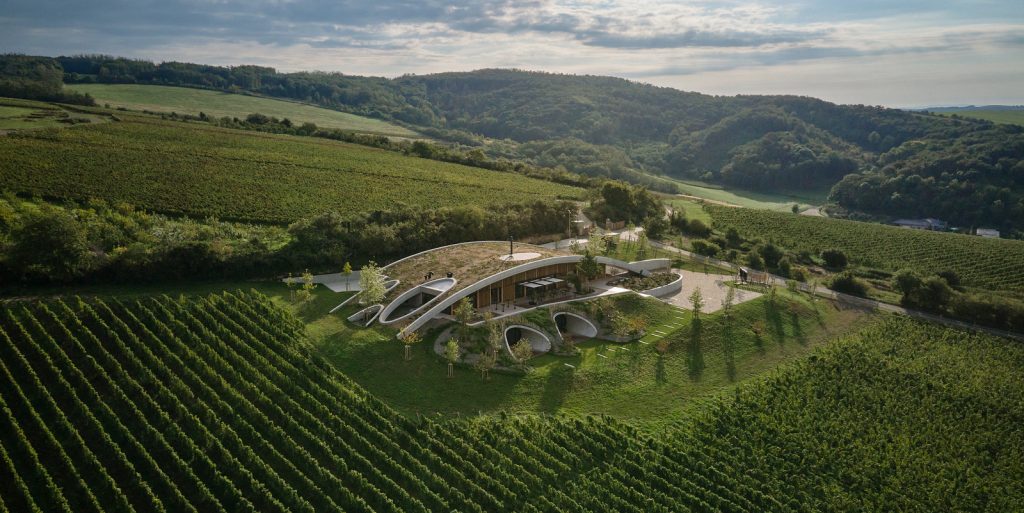

Xi An Club sby GAD
The project of Xi An Club developed by the local architecture practice GAD in Yuxi City, China, utilizes the natural context, making use of the distinct stepped typography to inform the design. The centre of the building embraces the varying contours of the surrounding hillside, while the roof with an image of the rippling waves further echoes the view of the lake. By extending the structure downwards, the architects ensure minimal disruption to the ecology.


Xi An Club sby GAD
Spanning 4,740 square meters, the center consists of an array of functional spaces, including spa, fitness, entertainment, reading, and art exhibition spaces. Each area’s unique shape is defined by its function, while the modular approach used by the team to effectively conceal equipment guides the flow of movement throughout the center.
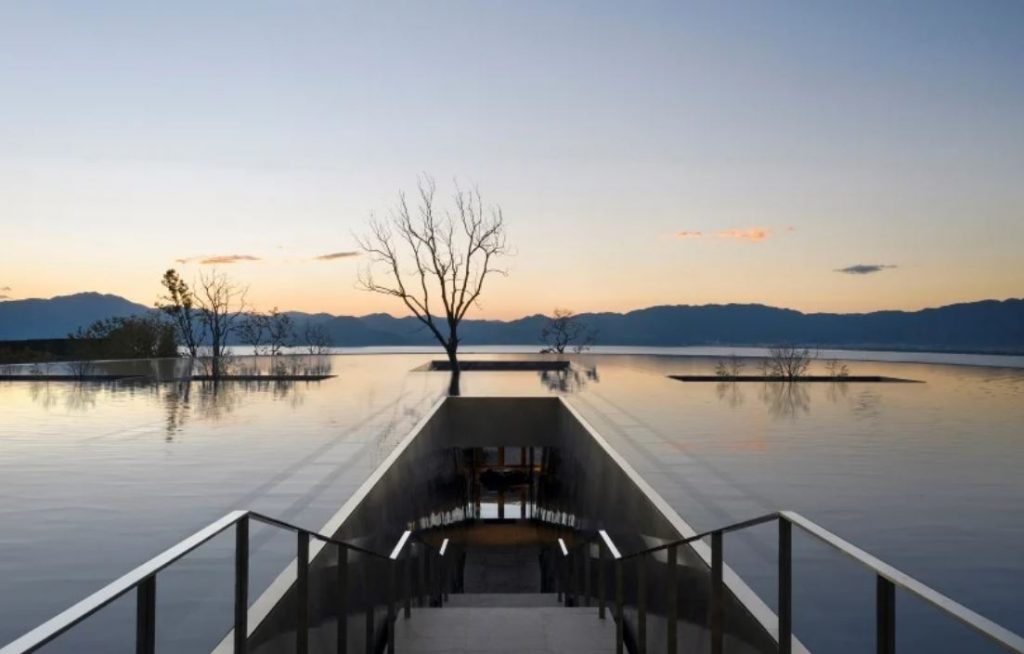
Xi An Club sby GAD
A fully open glass curtain wall serves as a transparent boundary between the interior and the surrounding landscape, while enabling breezes from the nearby lake and sunlight to flow effortlessly in.
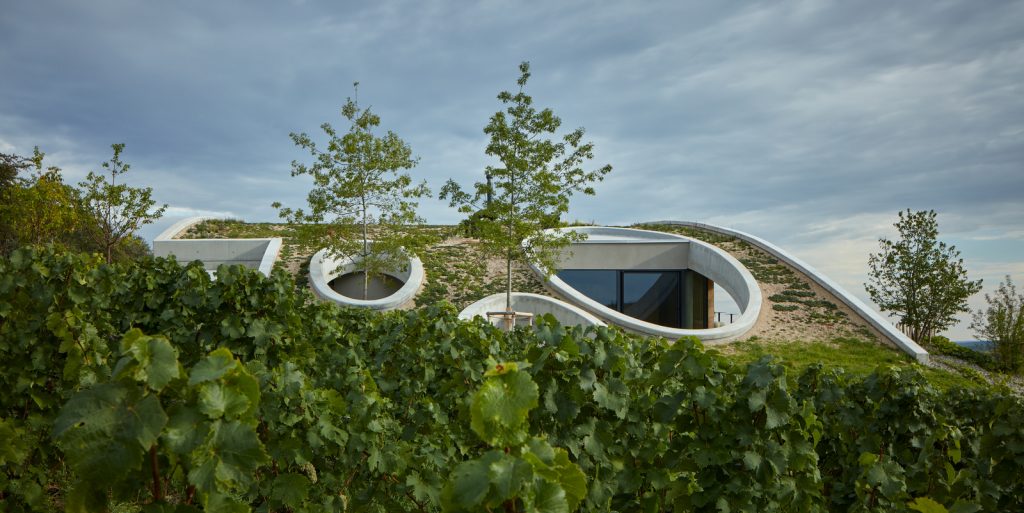
Gurdau Winery by Aleš Fiala Studio (also header image)
Seeking to carefully blend the new building into the landscape, local practice Aleš Fiala Studio has topped the Gurdau Winery located among fields and vineyards outside the village of Kurdějov Winery in the Czech Republic with a grass-toped roof above concrete tunnels dug into the terrain.
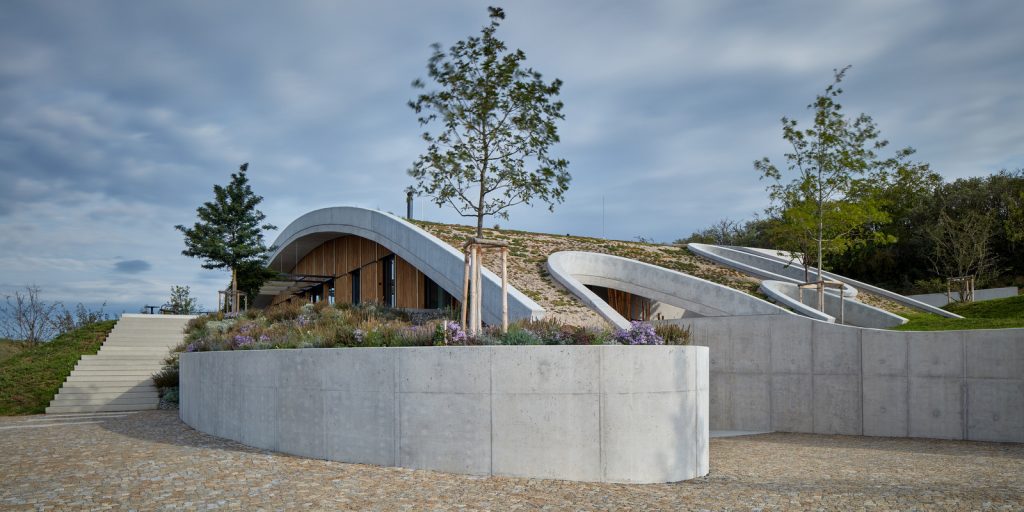
Gurdau Winery by Aleš Fiala Studio
The roof is punctured with large circular cutouts designed to let natural light penetrate the interior. These are aligned with areas of glazing on the ground floor. Where the sloping roof meets the ground, it blends with a series of winding concrete walls supporting planters around a paved patio.
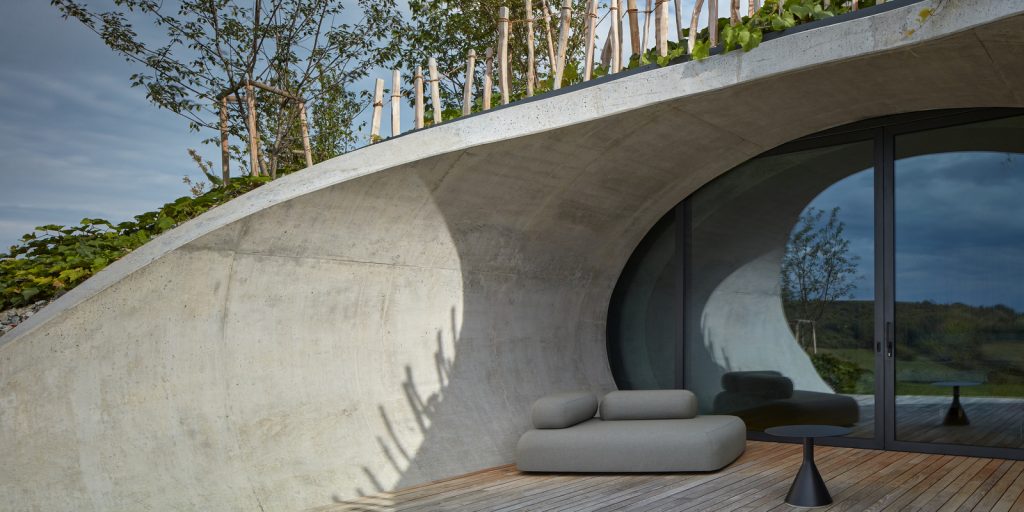
Gurdau Winery by Aleš Fiala Studio
Customer areas, such as the reception and wine tasting area, are open to the sun through a glass facade, thus making use of passive energy. At the front, the wine barrel room opens out onto a large terrace, accessed through a glazed facade sheltered from the sun by areas of wooden slats and a small steel canopy.
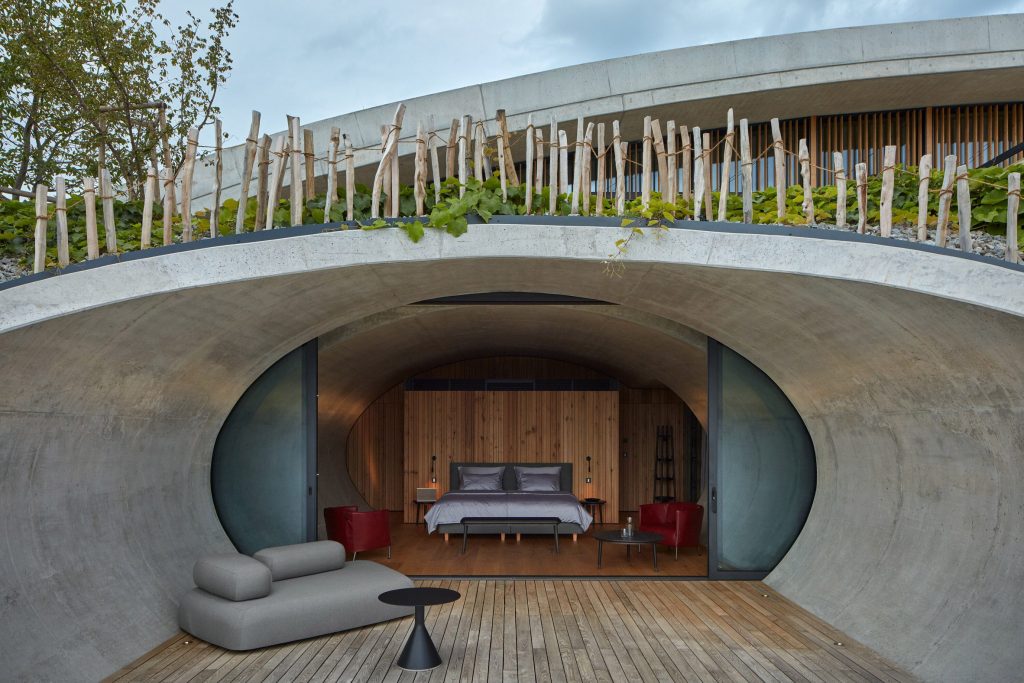
Gurdau Winery by Aleš Fiala Studio
Production areas, on the contrary, are located below, on the basement level. Here, one can also find two apartments for visitors looking out towards the landscape through two tunnel-like forms that shelter small, private terraces.

EcoPet flagship factory by Unism
Warsaw-based architectural studio Unism also blends a built structure into the rural landscape through its green roof. The project is a plan for a subterranean factory for food packaging company Ecopet in Drzewce, near the city of Lublin, Poland.
Positioned on the narrow and gully topography with a six metre height difference the building is organised on two levels developing a large structure under the ground. Ground floor level will have a linear layout and contain three main areas – raw material storage, production line and a storage for finished products.
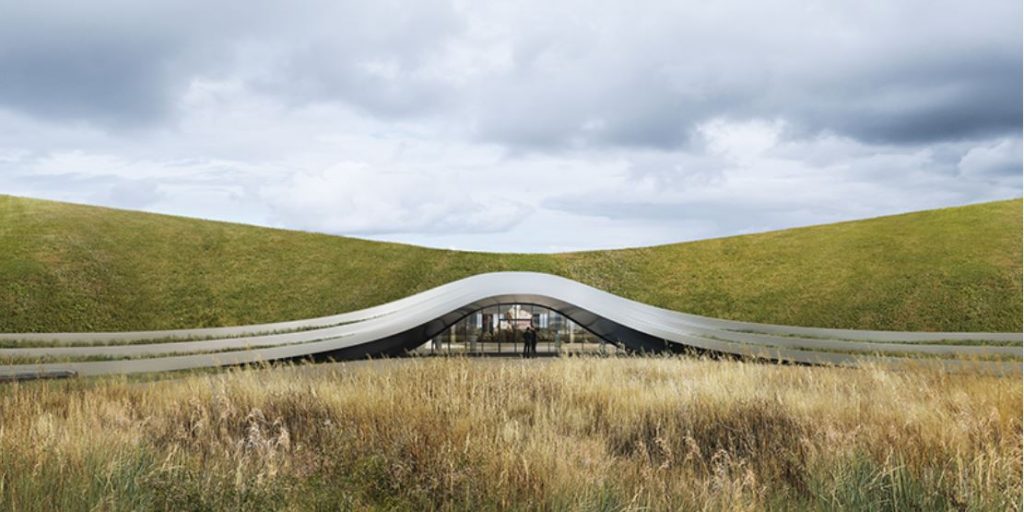
EcoPet flagship factory by Unism
The factory’s upper level opened to the public includes a visitor center, conference facilities, and a research center dedicated to the advancements in ecological packaging as well as adequate workspaces for office staff.